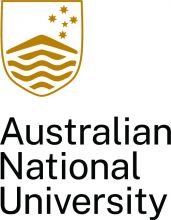Nanotechnologists have been elected to lead two of Australia’s top scientific representative bodies, as advocates look to researchers with expertise at very small scales to give their sector a very big voice.
Physicist Chennupati Jagadish, who heads the semiconductor optoelectronics and nanotechnology group in the Australian National University’s department of electronic materials engineering, has been named president of the Australian Academy of Science.
University of Adelaide pharmacologist Mark Hutchinson, who directs the Australian Research Council Centre of Excellence for Nanoscale Biophotonics, is the new president of Science and Technology Australia (STA).
Professor Hutchinson said he wanted to help the country tap into its “vast” scientific talent to solve its biggest challenges. “Science has been the source of solutions to the pandemic,” he said.
“[But] the pandemic has only called on a tiny fraction of the nation’s science capability. Imagine what would be possible if governments drew on the full breadth of science and technology in every policy area to solve challenges, seize opportunities and tackle big and complex issues.”
He said he wanted political parties to put science and technology “front and centre” in the coming election, “to serve the nation, shape policy, and build stronger sovereign capability for Australia. We know this is what the Australian people want.”
Professor Hutchinson is a poster boy for the federal government’s focus on research commercialisation, actualised in its newly announced A$243 million (?131 million) initiative to bankroll four “research and industry” hubs.
STA said Professor Hutchinson’s centre had translated “fundamental science discoveries at the lab bench” into “economic value in the boardroom”, producing 30 industry partnerships and creating 15 start-ups and spinoffs.
Professor Jagadish holds six US patents. Five relate to lasers, which have evolved from “curiosity-driven” research topics half a century ago to a mainstay of the internet, manufacturing and entertainment, he said.
Professor Jagadish’s research has been harnessed to make lightweight flexible solar cells, create hydrogen from water and manipulate neurons to treat?people with?dementia, the academy said. He has also pioneered the creation of high-performance optical devices with “huge” potential in communications and data storage.?
He said scientists must be allowed to follow their instincts. “We really need to create opportunities for people to pursue what they’re excited about. In the longer term, all these things lead to useful knowledge.”







